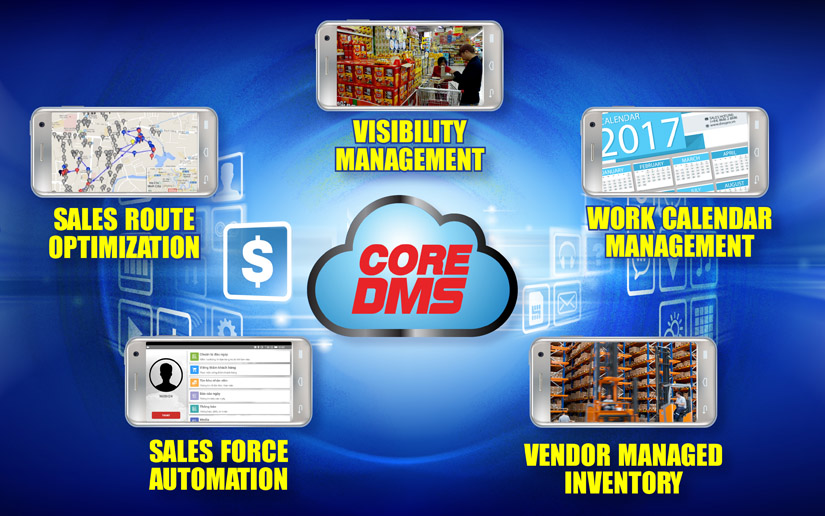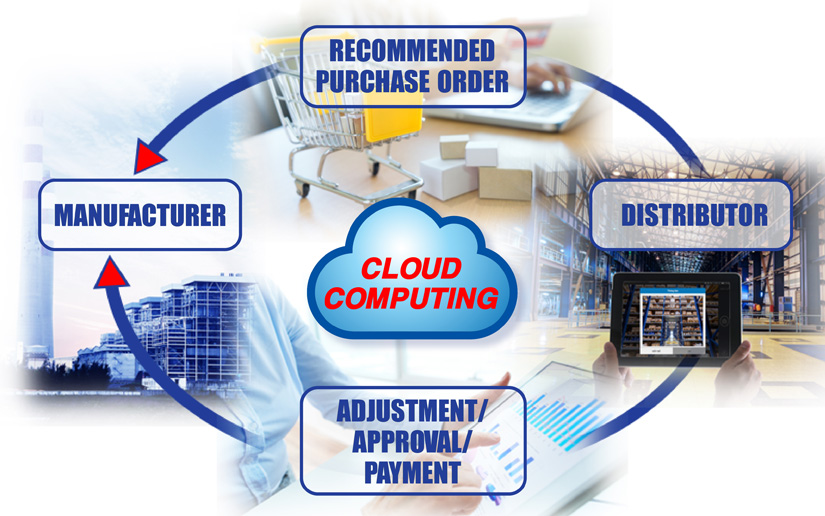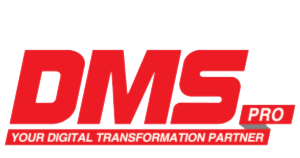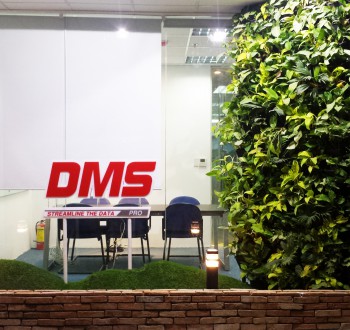- 19-10-2017
- Category: Press releases
Manufacturers and distributors in different industries all strive to control inventory levels throughout the supply chain. Even though enterprises want their products to be readily available for consumers anytime and anywhere, overstock is definitely no laughing matter.
Huge inventory surplus is considered a “nightmare”. Beside the fact that invested money does not generate returns, affecting Return on Equity (ROE), companies also need to execute more promotion, display, and activation programs etc. at the outlets to attract consumers and stimulate purchase. On the contrary, low inventory levels reveal the inability to satisfy demand, leading to a reduction of market coverage as consumers will easily switch to a competitor’s products. According to market research firm Nielsen, inventory shortage causes enterprises to incur losses worth more than 500 million USD per year.
Inventory control: a millstone around everyone’s neck
 Four most popular bottlenecks in inventory management
Four most popular bottlenecks in inventory management
Based on industry professionals’ experience, manufacturers and distributors must take into account the following 4 bottlenecks to prevent inventory management from wasting their time and investment capital:
- Loosely connected distribution channel: To identify a reasonable stock quantity, manufacturers have to evaluate several factors such as order processing time, product consumption rate, order expenses, warehouse expenses, delivery time, etc. This requires personnel in charge of operating the distribution channel to work in sync, utilize tools to obtain full and accurate market information, jointly perform demand planning, as well as establish schedules for manufacturing and supplying goods with rational amounts and frequency. Otherwise, companies will find it hard to avoid the “nightmare” of significant inventory surplus or shortage.
- Manual order and delivery method: In general, prevalent order and delivery processes are fairly manual. Normally speaking, the distributor places an order in Excel format, and then the manufacturers’ accountants review accounts receivable, inventory quantity, production progress, etc. before approving or declining the order. As the shipment arrives, the distributor makes payments, inputs the delivery form into their system and transfer goods to the warehouse. The longer this entire hand-operated procedure takes, the more inventory management and business efficiency will be impacted.
- Lack of inventory cross-checks: Even when order and delivery have been optimized, risks of being out of stock still emerge if the integrity and accuracy of data throughout the supply chain cannot be ensured. For example, some non-existent outlets may have been created and all inventory are reportedly sold, but no one has ever verified it. This is mostly because the manufacturer fails to put in place a policy of cross-checking or randomly examining inventory at each branch, agent, distributor and outlet.
- Ineffective communication between salesmen and the manufacturer: The sales force plays a crucial role in undertaking sales activities, recording and reporting on market information by taking care of retail outlets every day. They know in detail the revenue of each product type and product line, which promotion schemes are “hot”, whether inventory levels are appropriate, what stock and display strategies are implemented by competitors, etc. Such valuable input will help management make the right business decisions. However, in actual fact, “dead time” in communication between sales teams and the Head Office not only detracts from inventory management effectiveness, but also renders the company slow to respond to market changes, thereby losing out on revenue and product coverage.
Solving the inventory management puzzle with DMS software
In recent time, manufacturing and distribution industries have witnessed the impressive rise of Distribution Management System (DMS) Solutions, also known as DMS software. A few DMS developers have introduced prominent features which support enterprises to enhance the quality of distribution management, and completely remove the 4 bottlenecks in inventory management mentioned above.
Possessing a team of software engineers with over 15 years of experience in consulting and implementing DMS in Vietnam and Southeast Asia, as well as being the torchbearer of cloud-based DMS software in Vietnam, DMSpro is proud to be selected by large, multinational companies as their solution partner such as: Samsung, P&G, Tan Hiep Phat, URC, TH True Milk, Beiersdorf, Nhat Nhat Pharmaceutical, Pahtama (Myanmar), etc. According to Chairman Peter Pham, DMSpro’s ability to win the hearts of clients can be attributed to uniquely advantageous features of DMS itself.
 DMS software used for managing distribution and sales system. Source: DMSpro
DMS software used for managing distribution and sales system. Source: DMSpro
As the SFA application automates 100% sales procedures of the sales force, the eRoute feature enables management to update turnover, market coverage and stock amount at the outlets instantly based on accurate, real-time data sent by sales representatives from their mobile devices (smartphones or tablets) to the Head Office.
In particular, being the vital link between manufacturers and distributors, the Vendor Managed Inventory (VMI) function will analyze order history, current inventory levels, the company’s sales plans, days’ sales in inventory, seasonal factors, etc. Afterwards, employing smart algorithms, VMI automatically generates recommended purchase orders, processes and saves all orders, invoices and payments quickly and precisely. Furthermore, VMI can predict data entry patterns as well as preconfigure payment and promotion items so as to minimize manual errors. Manufacturers are now capable of shortening their order and delivery cycle, grasping overall stock status at the distributors in real time, and easily accessing historical data to forecast demand more accurately.
Thus, warehouse management and inventory control in the supply chain become much more simple and convenient: enterprises will totally avoid the risks of being out of stock while effectively preventing idle capital, since they only store an optimal amount of goods in the warehouse.
 Vendor Managed Inventory (VMI) function of the DMS system. Source: DMSpro
Vendor Managed Inventory (VMI) function of the DMS system. Source: DMSpro
Additionally, other features such as Visibility Management, Work Calendar Management (e-Calendar), Trade Marketing Program and Sales KPIs Management etc. also contribute to upgrading end-to-end distribution channel management, granting enterprises an ideal opportunity to boost operational efficiency and profit.
To keep inventory in check or more intricately, to manage the entire supply chain, a situational approach is sometimes not sufficient. We must reflect on the reciprocal, long-term relationship of members in the distribution network. Apart from obvious technical benefits, DMS is essentially a catalyst for the fruitful collaboration between manufacturers, distributors and sales teams, transforming real-time data exchange into a strategic “weapon” for enterprises to progress faster in such a highly competitive market.
“As a certified partner of SAP (Germany) and Acumatica (USA), DMSpro inherits from their powerful, stable and open technological platforms to develop distinct DMS features for many manufacturing and distribution sectors. Our mission is to give enterprises peace of mind in distribution and sales management, as well as capital optimization and business efficiency”, said Mr. Peter Pham
>> Are you ready to experience outstanding BENEFITS of DMS solution?
REGISTER NOW for a FREE consultation and demo: https://dmspro.vn/en/send-request-product-demo/
📞 Hotline: (+84) 8686 2 8686
✉ Email: info@dmspro.vn
 Your Distribution Management Solutions
Your Distribution Management Solutions

